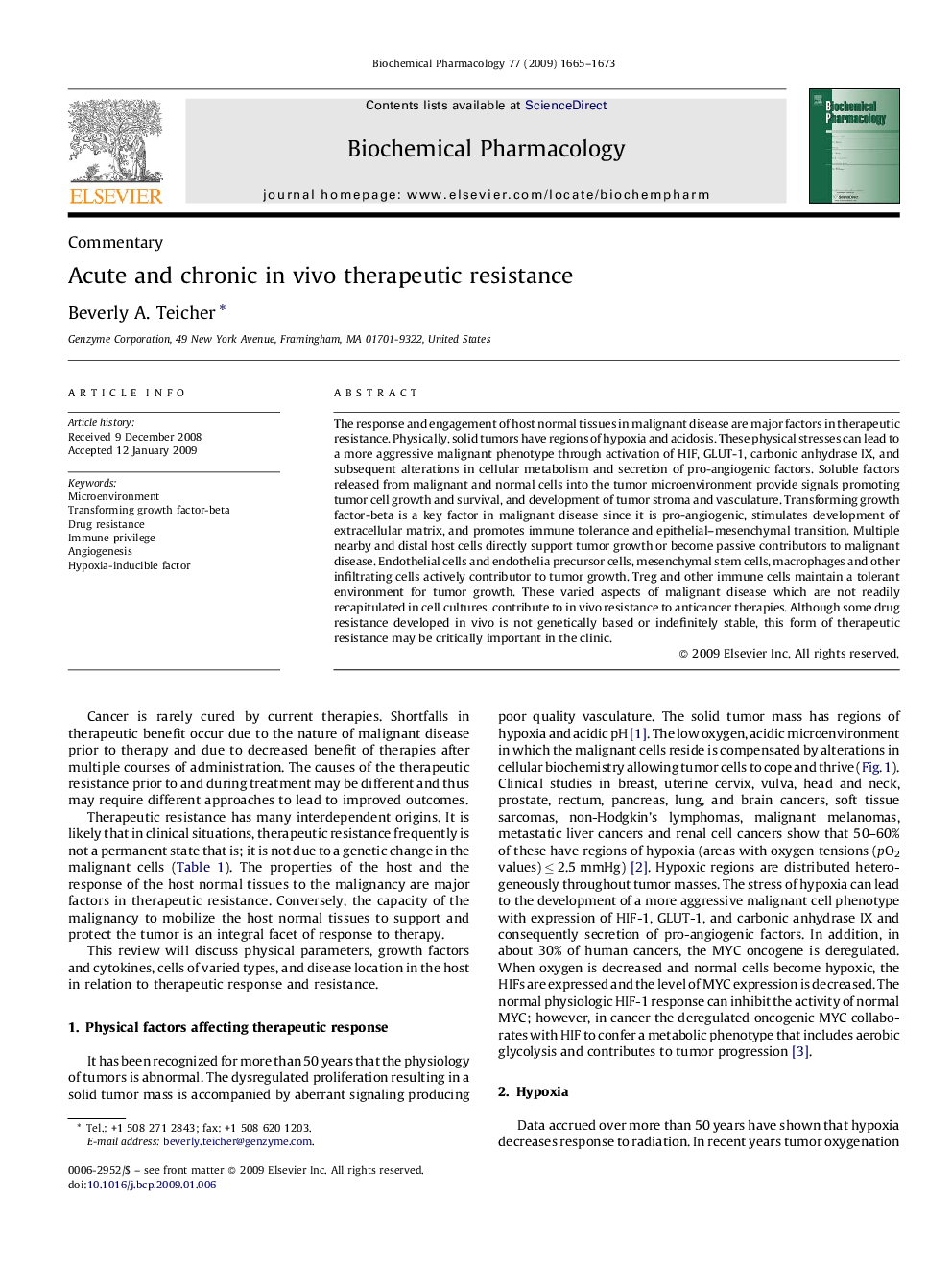| Article ID | Journal | Published Year | Pages | File Type |
|---|---|---|---|---|
| 2513831 | Biochemical Pharmacology | 2009 | 9 Pages |
The response and engagement of host normal tissues in malignant disease are major factors in therapeutic resistance. Physically, solid tumors have regions of hypoxia and acidosis. These physical stresses can lead to a more aggressive malignant phenotype through activation of HIF, GLUT-1, carbonic anhydrase IX, and subsequent alterations in cellular metabolism and secretion of pro-angiogenic factors. Soluble factors released from malignant and normal cells into the tumor microenvironment provide signals promoting tumor cell growth and survival, and development of tumor stroma and vasculature. Transforming growth factor-beta is a key factor in malignant disease since it is pro-angiogenic, stimulates development of extracellular matrix, and promotes immune tolerance and epithelial–mesenchymal transition. Multiple nearby and distal host cells directly support tumor growth or become passive contributors to malignant disease. Endothelial cells and endothelia precursor cells, mesenchymal stem cells, macrophages and other infiltrating cells actively contributor to tumor growth. Treg and other immune cells maintain a tolerant environment for tumor growth. These varied aspects of malignant disease which are not readily recapitulated in cell cultures, contribute to in vivo resistance to anticancer therapies. Although some drug resistance developed in vivo is not genetically based or indefinitely stable, this form of therapeutic resistance may be critically important in the clinic.
Graphical abstractFigure optionsDownload full-size imageDownload as PowerPoint slide
